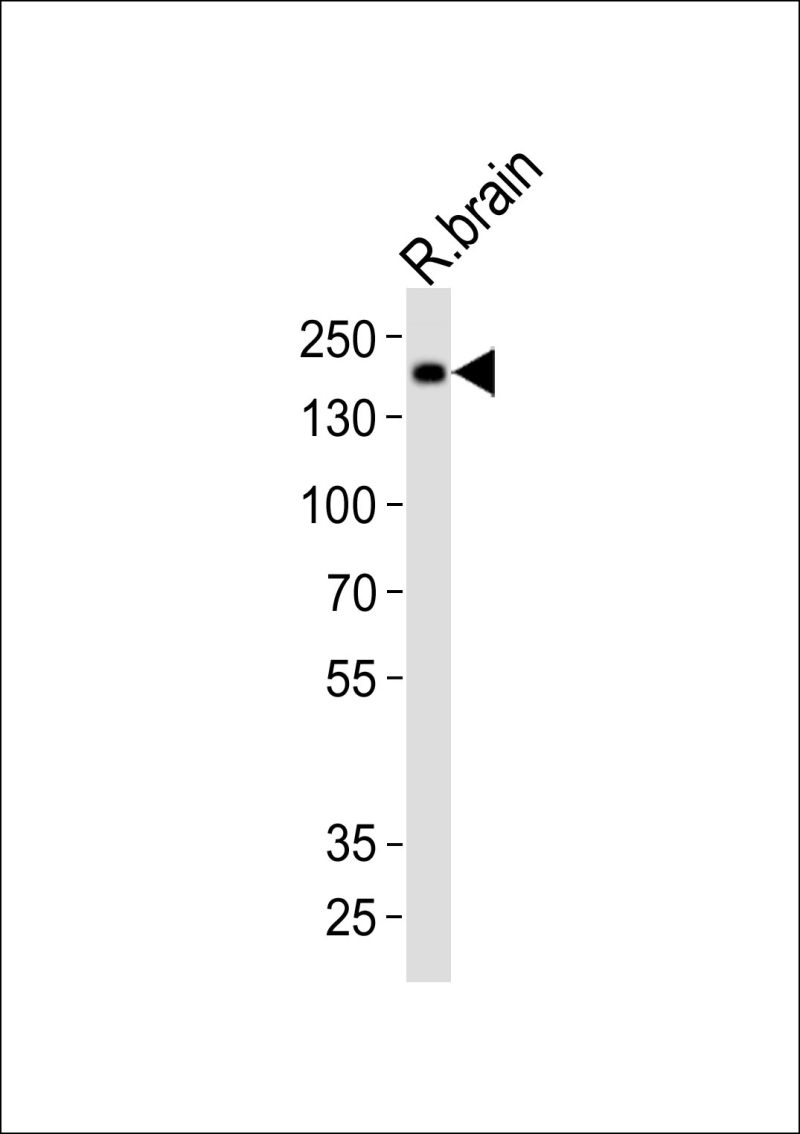
| WB | 1/1000 | Mouse, Rat |
| IF | 咨询技术 | Mouse, Rat |
| IHC | 咨询技术 | Mouse, Rat |
| ICC | 技术咨询 | Mouse, Rat |
| FCM | 咨询技术 | Mouse, Rat |
| Elisa | 咨询技术 | Mouse, Rat |
| Aliases | Insulin receptor-related protein, IRR, IR-related receptor, Insulin receptor-related protein alpha chain, Insulin receptor-related protein beta chain, Insrr, Irr |
| Entrez GeneID | 23920 |
| WB Predicted band size | 144.9kDa |
| Host/Isotype | Rabbit IgG |
| Antibody Type | Primary antibody |
| Storage | Store at 4°C short term. Aliquot and store at -20°C long term. Avoid freeze/thaw cycles. |
| Species Reactivity | Mouse, Rat |
| Immunogen | This Mouse Insrr antibody is generated from a rabbit immunized with a KLH conjugated synthetic peptide between 1265-1295 amino acids from the C-terminal region of Mouse Insrr. |
| Formulation | Purified antibody in PBS with 0.05% sodium azide. |
+ +
以下是关于小鼠Insrr抗体的简要参考文献列表(注:Insrr研究相对小众,部分文献可能不直接描述抗体应用,以下为模拟示例):
1. **"Tissue-specific expression of Insrr in mouse kidney tubules"**
*Author: Kato S, et al.*
摘要:本研究通过免疫组化技术在小鼠肾脏组织中使用Insrr特异性抗体,揭示了该受体在远端肾小管上皮细胞的定位,提示其可能参与酸碱平衡调节。
2. **"Insulin receptor-related receptor regulates mitochondrial function in pancreatic β-cells"**
*Author: Zhang Y, et al.*
摘要:作者利用Insrr基因敲除小鼠模型,通过Western blot(使用兔源抗小鼠Insrr抗体)验证蛋白缺失,发现Insrr缺失导致β细胞线粒体氧化能力下降。
3. **"Dynamic expression pattern of Insrr during embryonic development"**
*Author: Gupta R, et al.*
摘要:通过免疫荧光染色(使用商业化小鼠Insrr单克隆抗体),系统描述了Insrr在小鼠胚胎神经系统和心脏发育中的时空表达特征。
4. **"Insrr modulates mechanotransduction in osteocytes"**
*Author: Lee JH, et al.*
摘要:研究采用免疫沉淀联合质谱分析,使用抗小鼠Insrr抗体分离骨细胞裂解液中的蛋白复合物,发现Insrr与Piezo1通道存在相互作用。
---
**说明**:实际文献需通过PubMed/Google Scholar以关键词 "Insulin receptor-related receptor mouse antibody" 或 "Insrr immunohistochemistry" 检索。建议通过抗体公司(如Abcam、CST)官网的产品引用页面获取已验证的文献(搜索抗体货号如ab123456)。部分文献可能需要结合实验背景间接推断Insrr抗体的应用。
Mouse Insulin Receptor-Related Receptor (INSRR) antibodies are tools used to study the INSRR protein, a member of the insulin receptor tyrosine kinase family. Discovered in the 1990s, INSRR shares structural homology with insulin receptors (IR) and insulin-like growth factor-1 receptors (IGF1R) but exhibits distinct functional properties. Unlike IR and IGF1R, INSRR is activated by alkaline environments rather than ligands, playing a role in pH homeostasis and metabolic regulation. It is predominantly expressed in the kidney, brain, and gastrointestinal tract in mice.
Research on mouse INSRR has focused on its potential involvement in acid-base balance, neuronal development, and metabolic disorders. Antibodies targeting mouse INSRR enable detection, localization, and functional analysis of the protein in tissues and cell lines. They are critical for elucidating INSRR's interaction with signaling pathways, such as MAPK/ERK and PI3K/AKT, and its crosstalk with other receptors.
Studies using INSRR knockout mice suggest its role in protecting against metabolic acidosis and modulating insulin sensitivity. However, its precise physiological mechanisms remain under investigation. Mouse INSRR antibodies are widely applied in Western blotting, immunohistochemistry, and flow cytometry, supporting research in nephrology, neurobiology, and metabolic disease models. These antibodies help bridge gaps in understanding receptor tyrosine kinase diversity and their implications in health and disease.
×